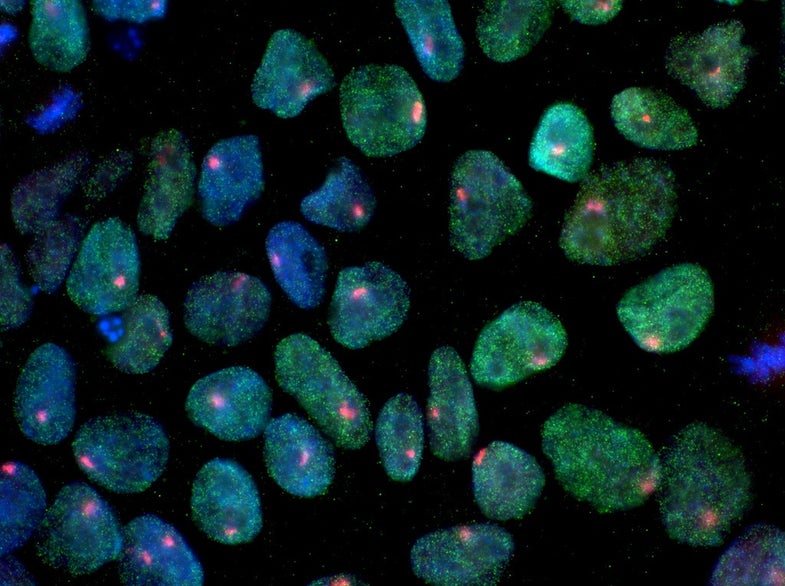Scientists Discover A New Kind Of Stem Cell
And are now one step closer to figuring out how stem cells work

There’s a new stem cell in town: induced XEN, or iXEN. Scientists thought for years they were a byproduct of other developing stem cells, but researchers have now determined that they are their own type of cell with their own function, according to a study published last week in the journal Stem Cell Reports.
You’ve probably heard of pluripotent stem cells, ones with the unique ability to transform into any kind of cell in the body. Scientists wanted to understand them not only to get a sense of the role they play in human development, but also because they could help treat a number of medical conditions in which tissues need to be repaired. For a while, scientists were limited to experimenting with just two types of stem cells: embryonic, which (controversially) come from embryos, and somatic, which are found in other tissues in the body to replace damaged cells.
Then, in 2007, researchers discovered a way to turn the body’s typical cells into pluripotent stem cells, called induced pluripotent stem cells. And while they were thrilled at the prospect of more available pluripotent stem cells that could be used for medical treatments, they were starting to learn that the 1,000 strange cells created along with each pluripotent stem cell might also be important.
XEN cells were one such type. Scientists had long observed them growing alongside embryonic stem cells and their gene expression was thought to affect the pluripotent stem cells. But they were usually considered to be cancer-like, an unwanted byproduct of embryonic stem cell production.
Then, researchers from Michigan State University discovered XEN cells popping up when they induced pluripotent stem cells. After six months of testing the XEN cells in mouse models, the researchers determined that the XEN cells weren’t cancer-like at all—their gene expression affected that of the pluripotent stem cells. Limiting the expression of the XEN cells meant, of course, that fewer of them were produced, but it also meant that the number of pluripotent stem cells that were produced significantly increased.
The researchers next plan to figure out if XEN cells play the same role in humans. If so, that could help scientists create more pluripotent stem cells to be used in medical treatments and use them more effectively.